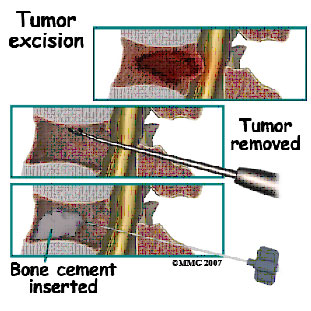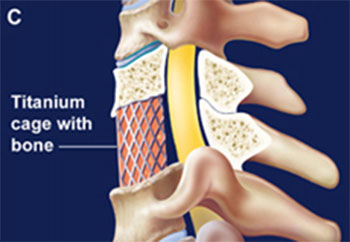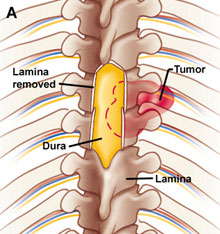A spinal tumor is a sporadic mass of tissue inside or incorporating the spinal rope and/or spinal fragment. These cells create and copy uncontrollably, obviously unchecked by the frameworks that control common cells. Spinal tumors can be pleasant (non-cancer-causing) or risky (harmful). Vital tumors start in the spine or spinal string, and metastatic or discretionary tumors result from development spreading from another site to the spine.
Spinal tumors may be suggested by the region of the spine in which they happen. These fundamental locales are cervical, thoracic, lumbar and sacrum. Besides, they moreover are described by their region in the spine into three significant social affairs: intradural-extramedullary, intramedullary and extradural


The surgical procedure involves making a small incision to inset a needle through it in the back of the patient. After this, medical-grade bone cement is injected into the fractured vertebra to fill up the empty spaces. This cement acts as an internal agent that stabilizes the bone. This type of treatment helps in reducing pain, preventing further crumple of the vertebra, and restoring the patient's mobility.
Indications may include:
The loss of sensation, particularly in the legs (may be in the knee or lower leg, with or without shooting pain down the leg) Back pain that deteriorates after some time, is frequently in the center or lower back, is normally serious and not eased by pain medication, deteriorates when resting or straining, and may stretch out to the hips or legs


The objective of treatment is to diminish or ward off any probable nerve damage that might occur due to increased pressure on the spinal cord.
Treatment types include:
The surgical procedure involves making a small incision to inset a needle through it in the back of the patient. After this, medical-grade bone cement is injected into the fractured vertebra to fill up the empty spaces. This cement acts as an internal agent that stabilizes the bone. This type of treatment helps in reducing pain, preventing further crumple of the vertebra, and restoring the patient's mobility.